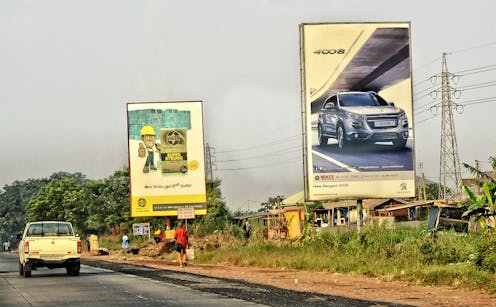
Used vehicles contribute greatly to transport emissions, undermining public health and the environment. In the US, Europe and parts of Asia, clunkers programmes – exchanging older, polluting used vehicles for cash – are becoming a popular approach for reducing the vehicles’ socio-environmental harms.
Only so many of the vehicles in circulation are, however, exchanged and destroyed or recycled. A good number of them are exported to Africa and other low-income regions of the world for reuse.
The practice, however, undermines the global sustainable development goal of moving towards safe-low emissions transport. In response, the UN Environment Programme has called on used vehicle dependent countries to adopt and enforce strong vehicle regulations. These include complete bans and age caps on their importation.
Many African countries have responded to the call. For instance, the environment and energy ministers of the Economic Community of West African States have adopted strict and comprehensive rules against used vehicle imports.
This is encouraging, considering that Africa has long been a major destination for used vehicles. For instance, 40% of the 14 million used vehicles that the European Union, Japan and the US exported between 2015 and 2018 went to African countries.
Our recent review of Ghana’s situation suggests, however, that import restrictions on their own are unlikely to yield meaningful, sustained public health and environmental gains.
In fact, these measures can make things worse. They can encourage people to continue using old, polluting and unsafe vehicles. They can also drive the supply of used vehicles to the black market. Our research makes a case for tying used vehicle import bans to reforms in spatial planning, land use systems and transport investments. It makes sense to consider what is stimulating demand for the vehicles.
Read more: Why Ghana relies heavily on used cars
Import reductions without public health gains
Ghana’s policymakers’ go-to strategy for reducing used vehicle consumption is to impose bans or higher penalties on their import. For instance in 1998, they introduced a law to ban the import of all vehicles older than 10 years. Four years later, they replaced that law with penalties on the imports.
These policies did not translate into public health and environmental gains. Little to no change occurred in road injuries or vehicular pollution. For instance, in 1997, Ghana’s road traffic crash injury per 100,000 people stood at 31.46. After the ban, the figure remained about the same.
Another study found that during the ban, carbon monoxide, carbon dioxide, volatile organic compounds, nitrogen oxides and particulate matter emissions even went up in the Accra-Tema area, where most of Ghana’s vehicles are concentrated.
A recent study has also shown that such measures do not increase the purchase of cleaner, new vehicles – not just in Ghana, but Africa generally.
Read more: Ghana's road traffic problems have deep and spreading roots
Untangling the contradictions
In sum, bans and higher penalties appear to result in declines in the quantity of registered used vehicle imports. But they don’t bring a shift towards new, safer, less polluting vehicles and sustained public health gains.
These outcomes are not surprising. First, by restricting used vehicle supply without making it easier to buy brand new ones, the import restrictions likely compelled people to keep really old vehicles on the roads.
It might also be that, contrary to official statistics, the import restrictions did not really reduce supply; they only redirected used vehicles to the black market.
To understand how these outcomes are possible, it helps to look at spatial planning, land use systems and transport investments in Ghana.
Ghanaian planning professionals and politicians continue to promote the spatial separation of work and other activities far from home, compelling people to travel more. Road construction induces more spread-out land use and, hence, more travel. Yet, building roads gets priority over investing in user-oriented public transport.
The largely privately run, poorly regulated minibuses (popularly called “tro-tro”) have stepped in to meet the demand for public transport. The trouble, however, is that the operators are focused on individual short-term profits. They do not have the capital for service improvements like fleet renewal or electrification.
The Government of Ghana and its “development partners” direct investments into bus rapid transport projects which do not always work as planned, leaving gaps. These conditions encourage the continued use of second-hand minibuses, which are often poorly maintained. Minibus users are exposed to discomfort, air pollution, poor safety and other problems. Research shows that the poor minibus experience adds to the factors that push people towards private cars in Ghana.
Meanwhile, income levels are generally low and auto loans are accessible to only a few high-income people. These factors undermine demand for expensive brand new vehicles.
The bans and import penalties only set the regulatory bar–and often the customs bribes–higher. They do not address the conditions that make people need old vehicles. Neither do they offer ways to afford newer, safer, less polluting options.
These conditions direct demand and supply to the black market. Importers, often in cahoots with corrupt customs officials, frequently manipulate the details of used vehicles and declare false information to escape bans and penalties. Used vehicles escape official records and end up on the roads.
Some ways out
Ghana’s experience suggests that reducing used vehicle consumption and the related socio-environmental harms will require more than just restricting supply through bans. Measures that address demand are likely to be more effective. They can include:
spatial planning that reduces the need to travel
making public transport, walking and cycling safer, efficient and attractive
tax relief and financial support for new safer, low emission public transport vehicles
minibus electrification and investment in local electrification initiatives.
The authors do not work for, consult, own shares in or receive funding from any company or organization that would benefit from this article, and have disclosed no relevant affiliations beyond their academic appointment.
This article was originally published on The Conversation. Read the original article.







